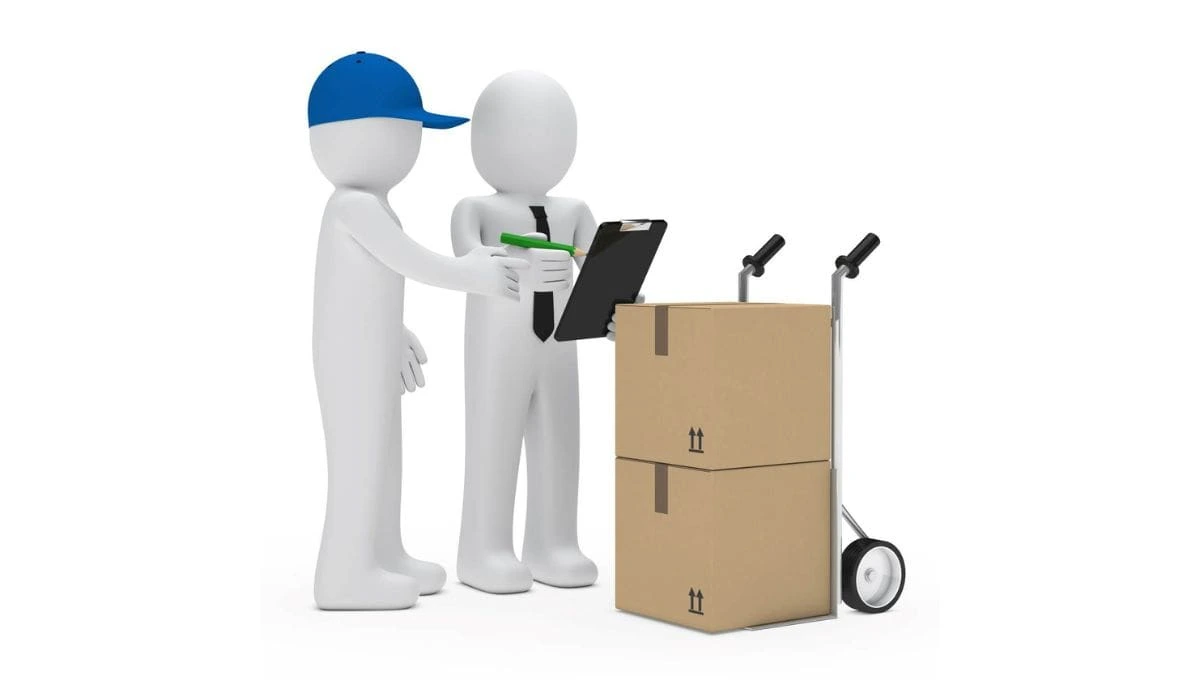Introduction
In digital era, starting an online business(startup) has never been easier. One of the most popular and accessible business models is dropshipping. Unlike traditional retail, dropshipping allows you to sell products without holding inventory or managing a warehouse. This makes it an attractive option for entrepreneurs looking to start an online store with minimal upfront costs.
In this step-by-step guide, we’ll walk you through everything you need to know to start a successful dropshipping business. From choosing a niche to scaling your store, this guide is designed to help beginners navigate the world of e-commerce with confidence.

Table of Contents
Learn more about Digital Marketing: Is It Legit in 2025?
Understand What Dropshipping Is
Before diving into dropshipping, it’s essential to understand how it works. Dropshipping is a retail fulfillment method where you, the store owner, don’t keep the products you sell in stock. when a customer/buyers places an order, you purchase the item from supplier, who then ships it directly to the customer/buyers.

How It Works:
- A customer places an order on your store.
- You forward the order details to your supplier.
- The supplier/third party ships the product directly to the customer.
- You earn the difference between the retail price and the supplier’s cost.
Pros of Dropshipping:
- Low Startup Costs: You don’t need to invest in inventory upfront.
- Flexibility: You can operate your business from anywhere.
- Wide Product Selection: You can offer a variety of products without holding stock.
Cons of Dropshipping:
- Lower Profit Margins: Since you’re not buying in bulk, your profit margins may be smaller.
- Shipping Complexities: Longer shipping times and reliance on third-party suppliers.
- Competition: Popular niches can be highly competitive.
Understanding these aspects will help you set realistic expectations and prepare for the challenges ahead.
Choose a Profitable Niche
Choosing the right niche is one of the most critical steps in starting a dropshipping business. Your niche determines the products you’ll sell and the audience you’ll target. Here’s how to find a profitable niche:
1. Follow Your Passion:
Start by brainstorming niches that align with your interests or expertise. Running a business in a niche you’re passionate about can keep you motivated.
2. Analyze Market Demand:
Use tools like Google Trends, SEMrush, or Ahrefs to identify trending products and niches. Look for consistent demand rather than short-lived fads.
3. Evaluate Competition:
Some competition is healthy, too much competition can make it difficult to stand out. Use tools like Jungle Scout or AliExpress to analyze competitors and identify gaps in the market.
4. Consider Profitability:
Choose products with a healthy profit margin. Avoid items that are too cheap or have high shipping costs, as they can eat into your profits.
Examples of Profitable Niches:
- Eco-friendly products
- Fitness and wellness gear
- Pet supplies
- Home organization tools
- Tech accessories
Conduct Market Research
Once you’ve chosen a niche, it’s time to dive deeper into market research. This step helps you understand your target audience and validate your product ideas.

1. Identify Your Target Audience:
Create a customer persona by defining your ideal customer’s demographics, interests, and pain points.
2. Study Competitors:
Analyze your competitors’ websites, product offerings, pricing, and customer reviews. Look for areas where you can differentiate yourself, such as better customer service or unique product bundles.
3. Validate Product Ideas:
Use platforms like Amazon, AliExpress, or social media to gauge customer interest in your chosen products. Pay attention to reviews and ratings to identify common issues or unmet needs.
Find Reliable Suppliers
The role of your suppliers is a crucial in your dropshipping business. They handle inventory and shipping, so it’s essential to partner with reliable suppliers.
1. Use Dropshipping Platforms:
Platforms like AliExpress, Oberlo, Spocket, and SaleHoo connect you with thousands of suppliers. These platforms often provide reviews and ratings to help you choose trustworthy partners.
2. Vet Your Suppliers:
Check their reviews and ratings on multiple platforms.
3. Negotiate Terms:
Discuss pricing, shipping options, and return policies with your suppliers. Building a good relationship with them can lead to better deals and smoother operations.
Set Up Your Online Store
Your store(online is the face of your business, so it’s very essential to create a professional, dynamic and user-friendly website.
1. Choose an E-Commerce Platform:
Popular platforms like Shopify, WooCommerce, and BigCommerce are beginner-friendly and offer dropshipping integrations.
2. Customize Your Store:
Select a clean and responsive theme that aligns with your brand. Customize your store’s design, logo, and color scheme to create a cohesive look.
3. Add Essential Pages:
Include pages like:
- Home: Showcase your best-selling products and promotions.
- About Us: Share your story and build trust with customers.
- Contact: You have provide multiple ways for customers to reach you.
- Privacy Policy: Outline how customer data is handled.
List Your Products
Your product listings is a crucial because it is the heart of your store. They should be informative, visually appealing, and optimized for search engines.
1. Write Compelling Descriptions:
Highlight the features and benefits of each product. Use persuasive language to encourage purchases.
2. Use High-Quality Images:
Include multiple high-resolution images from different angles. If possible, add videos to demonstrate the product in action.
3. Set Competitive Pricing:
Research your competitors’ pricing, product quality, supplier and set your prices accordingly. Don’t forget to factor in shipping costs and your desired profit margin.
Set Up Payment and Shipping Options
A seamless checkout experience is crucial for converting visitors into customers.

1. Integrate Payment Gateways:
Offer multiple payment options, such as credit cards, PayPal, and Apple Pay. Ensure your payment gateway is secure and trustworthy.
2. Configure Shipping Settings:
Clearly communicate shipping times and costs to customers. Offer free shipping if possible, as it’s a significant selling point for many shoppers.
Market Your Store
Marketing is the key to driving traffic and sales to your store. Here are some effective strategies:
1. Social Media Marketing:
Promote your products on platforms like Instagram, Facebook, and TikTok. Use engaging content, such as photos, videos, and customer testimonials.
2. Email Marketing:
Build an email list and send regular newsletters with product updates, promotions, and helpful content.
3. Paid Advertising:
Run targeted ads on Facebook, Google, or Pinterest to reach your ideal audience.
4. SEO:
Optimize your website and product listings for search engines to attract organic traffic.
Monitor and Optimize Your Store
Regularly tracking your store’s performance helps you identify areas for improvement.
1. Use Analytics Tools:
Tools like Google Analytics and Shopify’s built-in analytics provide insights into traffic, sales, and customer behavior.
2. Test and Optimize:
Experiment with different product listings, pricing, and marketing strategies to see what works best.
3. Gather Feedback:
Ask customers for feedback and use it to improve your store and products.
Scale Your Business
Once your store is up and running, it’s time to scale and grow your business.
1. Expand Your Product Range:
Add new products to attract more customers and increase sales.
2. Automate Repetitive Tasks:
Use tools like Oberlo or Zapier to automate order processing, inventory management, and customer communication.
3. Explore New Sales Channels:
Sell on multiple platforms, such as Amazon, eBay, or Etsy, to reach a wider audience.
Conclusion
Starting a dropshipping business is an exciting journey that offers endless opportunities for growth. By following this step-by-step guide, you’ll be well on your way to building a successful online store. Remember, success doesn’t happen overnight—stay consistent, keep learning, and adapt to changes in the market.
Learn more about Affiliate Marketing vs. Dropshipping:2025
Call to Action
Ready to start your dropshipping journey? Share your thoughts in the comments below! Don’t forget to subscribe for more e-commerce tips and guides. Happy selling!
Frequently Asked Questions
How do I ensure customer satisfaction in dropshipping?
To ensure customer satisfaction:
Provide accurate product descriptions and high-quality images.
Offer excellent customer service and respond to inquiries promptly.
Set realistic shipping expectations and communicate delays.
Handle returns and refunds professionally.
Gather feedback and continuously improve your store.
What are the best tools for dropshipping?
Some of the best tools for dropshipping include:
Shopify: For building and managing your online store.
Oberlo: For sourcing and importing products from AliExpress.
Google Analytics: For tracking website traffic and performance.
Canva: For creating marketing materials and product images.
Mailchimp: For email marketing campaigns.
Can I dropship products from multiple suppliers?
Yes, you can work with multiple suppliers to offer a wider range of products. However, managing multiple suppliers can be challenging, as it may lead to varying shipping times and costs. To streamline the process, use a dropshipping platform that integrates with multiple suppliers.
Is dropshipping legal?
Yes, dropshipping is a legal business model. However, you must comply with local laws and regulations, such as business licensing, tax requirements, and consumer protection laws. Additionally, ensure you’re selling genuine products and not infringing on trademarks or copyrights.
How do I handle returns and refunds in dropshipping?
Handling returns and refunds can be tricky in dropshipping since you don’t control inventory. Here’s how to manage it:
Clearly state your return and refund policy on your website.
Communicate with your supplier to process returns or replacements.
Consider offering partial refunds or store credit to reduce friction.
Always prioritize customer satisfaction to build trust and loyalty.
What are the common challenges in dropshipping?
Common challenges include:
Shipping Delays: Long shipping times can lead to customer dissatisfaction.
Low Profit Margins: Competitive pricing can reduce your profits.
Supplier Issues: Reliance on third-party suppliers can lead to stockouts or quality issues.
High Competition: Popular niches can be saturated, making it harder to stand out.
To overcome these challenges, choose reliable suppliers, focus on customer service, and differentiate your store through branding and unique product offerings.
How do I choose a profitable niche for dropshipping?
To choose a profitable niche:
Focus on areas you’re passionate about or have knowledge of.
Use tools like Google Trends, SEMrush, or AliExpress to identify trending products.
Analyze competition and look for gaps in the market.
Ensure the niche has consistent demand and offers products with healthy profit margins.
Where can I find reliable suppliers for dropshipping?
You can find reliable suppliers on platforms like:
AliExpress: A popular choice for beginners due to its vast product range.
Oberlo: Integrated with Shopify, it simplifies product sourcing.
Spocket: Offers high-quality products from US and EU suppliers.
SaleHoo: A directory of vetted suppliers.
Always vet suppliers by checking reviews, ordering samples, and evaluating their shipping times and customer service.
Written By: MD CHAND ALAM


1 thought on “How to Start Dropshipping Step by Step(2025)”